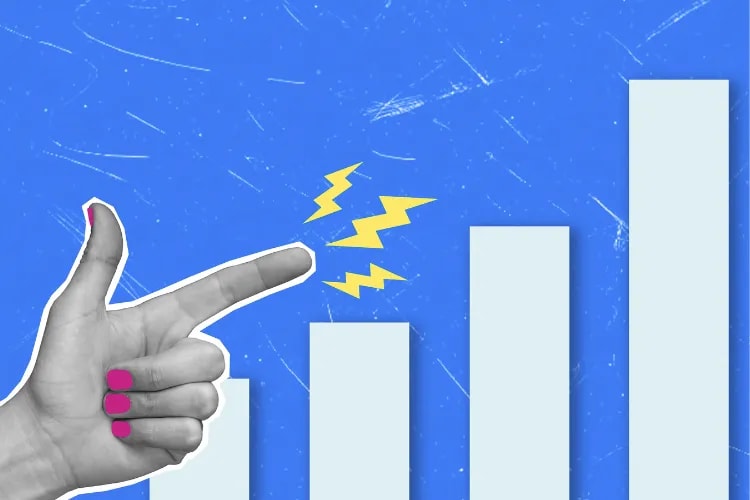
Dynamic ticket pricing is reshaping how events sell seats. Instead of setting a single price and hoping demand cooperates, organizers now adjust prices in real time to reflect interest, inventory, timing, and market movements. Done right, it means fuller rooms, happier fans in the right seats, and more revenue you can reinvest into talent and experience.
Why now? The economics and tooling have matured. Leaders in dynamic pricing across industries report measurable gains—often sustained—when they industrialize pricing with data, models, and guardrails, not just one-off price hikes. For event creators, the stakes are high in a fast-growing market, and the upside is tangible when you align pricing to real-time demand signals.
One guiding stat: Several large-scale dynamic pricing programs have reported multi-point lifts in sales and margins when teams adopt AI-driven decisioning with clear constraints and governance. That’s the difference between reactive price changes and a revenue engine you can trust.
In this guide, we’ll unpack what dynamic ticket pricing is, why it works, the key factors to model, and how to implement a transparent, fan-friendly approach that maximizes sell-through without eroding trust.
Dynamic ticket pricing (DTP) replaces fixed price tags with time-varying prices that respond to demand, remaining inventory, and proximity to the event. Modern DTP engines forecast demand, estimate price elasticity, simulate different price paths, and recommend updates—often automatically—within guardrails that protect your brand and fan trust.
Think of dynamic pricing as continuous “test-and-learn” over a finite selling horizon. Instead of guessing what the market will bear on day one, you allow prices to evolve as data rolls in: early interest, sales velocity by section, day-of-week effects, and even competitor moves. Crucially, dynamic pricing isn’t about changing prices constantly; it’s about changing them when new information meaningfully improves the decision.
Under the hood, many teams use machine learning to forecast demand and optimize prices, then constrain recommendations with rules: floors and ceilings, maximum change frequency, and caps by section or customer segment. This “engine plus guardrails” approach is what separates strategic pricing from ad-hoc tweaking.
Core principles of dynamic ticket pricing:
Optimize over time: adjust prices across the entire on-sale window—not just at launch.
The Loopyah Content Team shares expert insights, practical guides, and industry updates to help event organizers create unforgettable experiences and stay ahead in the event planning world.
marketing
Balance supply and demand: match willingness-to-pay to remaining seats and time-to-event.
Use data and models: forecast demand, estimate elasticity, and simulate outcomes before pushing changes live.
Add guardrails: limit frequency/amplitude, protect fairness, comply with all-in pricing rules, and communicate clearly.
If you’re new to pricing strategy, you may find it helpful to ground yourself in foundational approaches before layering in real-time pricing. For a primer, see ticket pricing strategies and optimizing event tickets pricing for baseline frameworks you can extend with dynamic techniques.
DTP aligns price with real-time willingness-to-pay, capturing upside when demand surges and preserving value as you approach showtime. Across sectors, programs that industrialize dynamic pricing—integrating data, models, and governance—report sustained, multi-point improvements in revenue and margin, not just short-lived spikes.
The key is institutionalizing a price engine: clean data pipelines, elasticity models by section, simulation/sandbox tools, and explicit guardrails. A mature engine keeps delivering season after season because it learns, tests, and adapts without veering into fan-hostile territory.
For deeper context on the business outcomes leading adopters have reported, see this overview from McKinsey on dynamic pricing programs.
Dynamic pricing isn’t only about charging more. Properly calibrated engines lower prices during soft sales windows to pull demand forward, smooth peaks and valleys, and increase overall attendance. This flexibility lets you nudge price-sensitive fans into off-peak sections or days while preserving top-tier value when the heat is on.
For example, organizers often offer “early bird” or weekday discounts to build momentum and accelerate the sell curve, then tighten prices for prime nights and premium sections. Over time, you’re not just filling seats—you’re shaping the entire demand pattern to reduce empty rows and last-minute fire sales.
Every unsold seat at curtain-up perishes in value. Dynamic ticket pricing treats inventory like an airline: you’re optimizing a finite, expiring resource. By factoring in remaining seats and time-to-event, your engine can recommend price moves that increase sell-through while protecting high-value inventory until the right moment.
Practically, this looks like: raising prices section-by-section as blocks near sell-out; holding floors on VIP inventory until the right conversion signals appear; discounting upper tiers or obstructed-view seats when the marginal revenue from occupancy (concessions, merch, energy) outweighs a small price cut.
DTP really shines when paired with thoughtful offers. Tiered ladders—early-bird, standard, VIP/patron tiers, bundles, and add-ons—allow fans to self-select into the experience that fits their budget and preferences. Instead of blanket price hikes, you curate a menu of value: perks, proximity, and flexibility.
For example:
Early-bird windows for price-sensitive fans, with limited quantities to create urgency.
VIP packages with guaranteed best seats, lounge access, or meet-and-greets that anchor premium value.
Bundles (e.g., multi-day or multi-game passes) that reward loyalty while stabilizing revenue earlier in the cycle.
If you’re weighing which offer types to prioritize, this deep dive on factors affecting ticket sales conversion can help you design segments and benefits that move the needle.
A robust DTP program blends multiple signals into each recommendation. Here are the big four:
Demand signals include early on-sale velocity, waitlist size, website and app traffic by section, marketing response rates, and resale market activity. When demand runs hot, prices can ratchet up within guardrails. When demand softens, smart systems nudge prices down—or unlock promos—to stimulate conversion without cheapening the brand.
Time is the enemy of perishable inventory. Early in the cycle, you might price to build momentum; as the event nears, the model weighs remaining seats against expected last-minute demand. The goal isn’t just to sell out—it’s to sell out profitably, with the right price at the right time for each section.
Your engine should monitor comparable events, secondary market listings, and regional entertainment options. Competitor-aware pricing helps you avoid being priced out—or leaving money on the table—while maintaining frequency caps and brand consistency so changes don’t feel erratic.
A playoff game, a reunion tour, or a Saturday headliner behave very differently from weekday shows or early-season matchups. Calibrate your priors (baseline demand assumptions) by artist/team draw, calendar effects, venue capacity, historical sell curves, and local spending patterns. Then let the real-time data update your view.
Want to build the right data foundation around these signals? Explore the tools roundup in event marketing tools to connect analytics, messaging, and sales in one loop.
Whether you run a club series or a multi-venue festival, the rollout path is similar. Treat pricing as a product with a roadmap, not a one-off change.
Analyze historical data
Aggregate past sales by section, price point, channel, day-of-week, artist/team, opponent, and campaign. Reconstruct sell curves and identify elasticity by segment. Clean data matters: remove anomalies (bots, bulk corporate buys), label promos, and track inventory changes over time.
Set clear objectives
Decide what you’re optimizing for: gross revenue, sell-out probability by a target date, weighted occupancy (e.g., prioritize lower bowl), or a blend. Your objective informs guardrails: floors/ceilings, max change size, sections excluded from dynamic, or price parity rules for partners.
Choose the right technology
Look for an engine that supports demand forecasting, elasticity modeling, competitor feeds, and simulation, with features like explainability (why a price changed), sandbox testing, and role-based approvals. Integrations with your ticketing platform should enable real-time updates while enforcing frequency caps and compliance.
If you want a centralized hub for event tooling and integrations, explore our feature overview on event software. You can also coordinate price-related messaging directly through email event attendees to clearly announce early-bird windows, price changes, or low-inventory alerts.
Monitor and adjust
Set up dashboards and alerts for unusual traffic spikes, resale shocks, or sudden competitor moves. Govern frequency more than speed: change prices when new data improves the decision, not simply because you can. Keep a changelog so customer support can explain price history if needed.
Teams across leagues use variable and dynamic pricing to align prices with matchup quality, day-of-week, and in-season momentum. When a rivalry game or playoff decider lands on a weekend, demand signals justify higher prices—within guardrails—to balance sell-through and value. Conversely, weekday games or early-season fixtures may lean on discounts and bundles to build atmosphere and loyalty.
Academic evaluations caution that naïve rules (e.g., raising prices every time sales tick up) can underperform well-designed static prices. The takeaway: the “how” matters more than the “what.” Robust models that forecast demand, respect constraints, and simulate alternative paths consistently outperform simplistic heuristics.
If sports are your focus, see our practical look at tools in ticketing solution for sports to pair pricing strategy with seat maps, mobile entry, and sponsor activations.
High-demand onsales highlight both the power and the risk of dynamic pricing. When an artist announces limited dates or a reunion tour, prices can climb fast if guardrails are loose—driving significant revenue but inviting fan backlash if changes feel sudden or opaque. Some artists have chosen to cap dynamic pricing or opt out entirely in specific markets to emphasize fairness and predictability.
Best practice: pair dynamic pricing with clear communications. Publish your approach in advance (e.g., “limited early-bird tiers, then prices may adjust based on demand with caps”). Use email and social to announce price windows and low-inventory moments, and ensure price displays are all-in.
Festivals often favor transparent, tiered ladders—community or early tiers through patron/VIP tiers—so fans can self-select based on budget and benefits. This structure is a practical, fan-friendly form of dynamic pricing because it sets expectations upfront while still capturing willingness-to-pay across segments.
Operationally, tiered ladders simplify messaging and reduce surprise. Organizers can still use real-time signals to decide when to open the next tier or offer targeted discounts on slower days, all while preserving the integrity of the promise they made to fans at on-sale.
In a recent Loopyah study, 34% of event attendees reported that price change due to demand-based pricing led them to abandon a ticket purchase in the last 12 months. Whilst that's not the majority, it still reflects a code downside of using dynamic ticket pricing, especially if not implemented correctly.
Dynamic pricing can backfire if it feels exploitative. Large, frequent jumps—especially without clear explanation—create a sense of unfairness. Make trust a KPI. Use floors/ceilings, limit change frequency, and lead with discounts in off-peak moments so fans see benefits as well as increases. Brief your support teams on the “why” behind price changes and keep a public-facing FAQ.
All-in pricing is increasingly a regulatory requirement in live events. Ensure that the first price fans see is the total price they’ll pay, and keep your pricing logic explainable and auditable. This protects fans and your brand—and helps you avoid compliance and reputational headaches.
For the latest on U.S. “junk fee” policy in live events, review the FTC’s announcement on up-front pricing requirements and ensure your displays and messaging align.
Listen actively: social chatter, support tickets, fan surveys, and on-site feedback illuminate where dynamic pricing feels confusing or unfair. Use that intel to refine caps, simplify messaging, and adjust cadence. A small change—like holding prices steady for the first hour of on-sale—can materially improve perceived fairness.
Treat pricing as a product: design it, test it, explain it, and govern it. When trust is a KPI, dynamic pricing becomes a fan-friendly growth engine.
If you’re calibrating offers and promotions alongside pricing, pair this guidance with our playbooks on optimizing event tickets pricing and event marketing tools to keep the whole funnel aligned.
New approaches—contextual bandits, reinforcement learning, non-parametric utility models—are improving how quickly and accurately engines can recommend prices. Expect faster learning from smaller data, better section-level elasticity estimates, and smarter multi-objective optimization (revenue vs. occupancy vs. fairness). Just as important: expect stronger governance, with human-in-the-loop approval flows and audit logs.
While truly individualized pricing raises fairness concerns, segment-aware strategies are becoming mainstream. Examples: early access for loyalty members, bundles for superfans, and targeted discounts for students or locals. The guiding principle remains the same: transparent rules, clear benefits, and easy-to-understand price ladders.
Dynamic pricing performs best when it connects to marketing and operations. Trigger emails when tiers change, sync seat maps so section-level changes are reflected instantly, and alert sales/promotions teams when price milestones are hit. If you want to streamline these handoffs, explore our feature overview at event software and set up cohesive workflows that connect pricing, messaging, and on-site operations.
Dynamic ticket pricing, implemented thoughtfully, helps you grow revenue, smooth demand, and reduce unsold inventory—without sacrificing fan trust. The formula is straightforward: clear objectives, solid data and modeling, transparent communications, and firm guardrails that keep pricing consistent with your brand values.
Start small if you need to—one section, one series, one festival day—then expand as you learn. Document the rules, explain the why, and listen to your fans. With that foundation, dynamic pricing becomes a durable advantage, not a short-lived tactic.

marketing









marketing
tools
marketing
selling
tools
selling
marketing
growth
planning